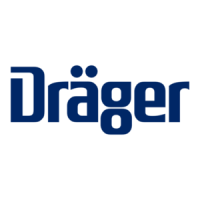2
19
Verwendungszweck
Purpose
Planning your dive,
diving your plan.
You have all heard this phrase
before. It is part of the standard
lecture given by virtually every scu-
ba instructor around the world.
While it is certainly an important
rule to follow in open circuit scu-
ba diving, by now you are all aware
that you have a certain degree of
leeway in your diving while using
open circuit scuba gear, particu-
larly on air, that may allow you to
go to deeper depths than originally
planned, or to work more
strenuously than you previously
thought you needed to do on a
given dive. Not so with a semi-clo-
sed rebreather. With the Dolphin
or any other semi-closed rebrea-
ther, you must be very careful to
follow your dive plan due to the
selection of gas and flow rate that
must be done before you enter the
water. As with any nitrox diving,
you must not dive deeper than the
mixture allows. Additionally, if you
find yourself working significantly
harder during a dive than you had
anticipated, it is time to abort the
dive and return to the surface to
avoid reducing the oxygen level
(and thereby increasing the nitro-
gen level) to the point where di-
ving may become unsafe.
Warning!
YOU MUST carefully plan your
dive, and dive that planned dive
when using the Dolphin. This me-
ans selecting the appropriate ni-
trox mixture as well as the appro-
priate flow rate for the dive. Failu-
re to do so may lead to serious
injury or death.
Für diese Berechnung dürfen Sie
niemals den Sauerstoff-/ Stick-
stoffgehalt in der Mischgasflasche
verwenden. Eine Mißachtung die-
ser Warnung kann zu schweren
Schäden oder zum Tod führen.
Das Gerät beinhaltet ein robustes
Tarierjacket (in der internationalen
Version ist die Tarierblase ein se-
parat zu bestellendes Zubehör-
teil), mit welchem der Taucher sei-
nen Auftrieb unter Wasser regu-
lieren kann. Das Dolphin-Tarierjak-
ket ist mit einem Inflatormundstück
ausgestattet.
Das Tarierjacket des Dolphin ist
keine ohnmachtsichere Rettungs-
weste und sollte auch in keinem
Fall als eine solche benutzt wer-
den. Es ist, wie der Name schon
sagt, ein Tariermittel, mit dem der
Taucher unter Wasser sein hydro-
statisches Gleichgewicht herstel-
len kann.
Warnung!
Eine ohnmachtsichere Lage des
Tauchers an der Wasseroberflä-
che kann nicht garantiert werden.
Aus diesem Grund ist das Dol-
phin-Tarierjacket keine Rettungs-
oder Schwimmweste.
Tauchgangsplanung
Die genaue Planung des Tauch-
ganges, sowie die sorgfältige Ein-
haltung dieses Planes sind für die
sichere Benutzung von Kreislauf-
geräten von lebenswichtiger Be-
deutung. Während der Sauerstoff-
anteil im Atemgas die maximale
Tauchtiefe vorgibt, kann eine er-
höhte Arbeitsleistung des Tau-
chers zu einer Erhöhung des
Stickstoffanteils im Atemkreislauf
und damit zu veränderten Dekom-

